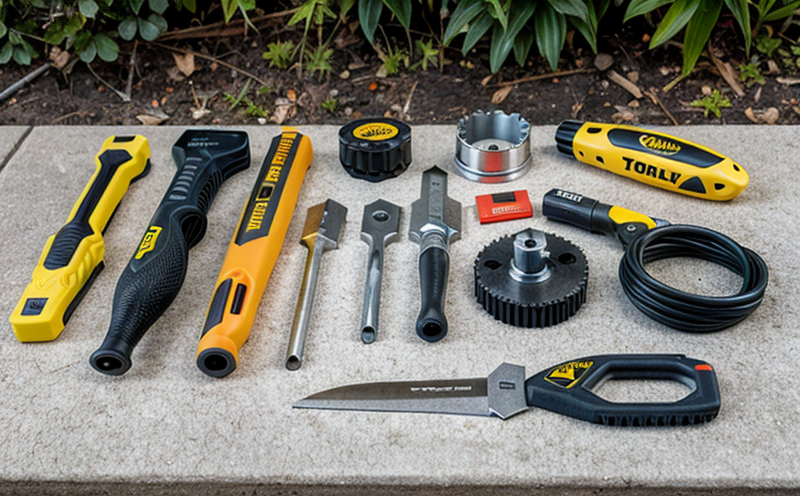Compression Resistance Testing in Hand Tools
The compression resistance testing of hand tools is a critical quality assurance (QA) and compliance procedure that ensures these products meet industry standards and customer expectations. Compression tests are particularly important for assessing the durability and safety of components such as handles, grips, and fasteners, which can directly affect user safety and tool performance.
Hand tools used in various sectors, including automotive manufacturing, construction, and DIY projects, often need to withstand significant forces during use. For instance, wrenches, screwdrivers, and pliers are frequently subjected to compressive loads that can range from tensile stress on the handle to shear forces at the fastener. Ensuring these tools can resist such pressures is vital for preventing accidents and ensuring efficient operations.
Compression resistance testing typically involves subjecting a sample of the hand tool to controlled compression forces until it fails or meets specific criteria. The test setup may include hydraulic presses, universal testing machines, and dedicated compression testing rigs. Specimen preparation depends on the type of material being tested—wood, metal, composite materials—and can involve drilling holes for fasteners or creating notches to simulate real-world stress points.
Instrumentation used in these tests includes load cells to measure applied force, displacement gauges to monitor deformation, and video cameras to capture test behavior. Reporting involves documenting the maximum load before failure, any observed deformations, and comparisons against specified performance criteria.
The importance of compression resistance testing cannot be overstated, especially for tools used in high-stress environments or by users who are not trained professionals. For example, a DIY user might apply more force than necessary when using a wrench, increasing the risk of tool failure. In industries like automotive manufacturing, where precision and safety are paramount, even minor failures can lead to significant downtime and costs.
Standards such as ISO 13857 for mechanical equipment safety and ANSI B1.1-2019 for hand tools provide specific guidelines on how to conduct compression resistance tests. Compliance with these standards ensures that the testing process is consistent, repeatable, and meets global quality benchmarks.
| Applied Standards | Description |
|---|---|
| ISO 13857:2015 | Mechanical equipment - Safety of machinery - Prevention of entrapment between moving parts and fixed elements |
| ANSI B1.1-2019 | Specification for hand tools - Safety requirements |
In summary, compression resistance testing in hand tools is essential for ensuring product safety and durability. By adhering to industry standards and using appropriate test equipment, manufacturers can produce reliable tools that meet customer expectations and regulatory requirements.
Applied Standards
These standards provide the necessary framework for conducting compression resistance tests, ensuring that the testing process is both rigorous and consistent.
Benefits
- Enhanced product durability: Ensures components can withstand normal usage pressures without failure.
- Improved safety: Reduces the risk of accidents by confirming tool integrity under stress.
- Increased customer satisfaction: Reliable tools lead to higher customer retention and positive reviews.
- Compliance with regulatory requirements: Meets international standards for product safety.
- Cost savings: Prevents costly recalls and warranty claims due to failed products.
- Competitive advantage: Differentiates the brand in a crowded market by offering superior quality tools.
The benefits of compression resistance testing extend beyond individual tools, contributing to broader business success and customer trust.
International Acceptance and Recognition
- ISO standards are recognized globally, ensuring consistent testing protocols across different countries.
- ANSI standards provide a clear framework for compliance in the United States and internationally.
- Compliance with these standards is often required by regulatory bodies worldwide, including OSHA (Occupational Safety and Health Administration) in the U.S. and EU directives.
The international recognition of these standards ensures that compression resistance testing results are accepted across various markets, facilitating global trade and reducing barriers to entry for compliant products.





